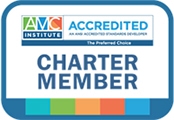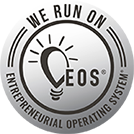For marketers, 2015 has been a challenging year to market to a younger generation and keep up with ever-changing technologies. As a 23 year old senior at Stockton University, marketing reaches me in several different ways. The most typical way would be through some sort of experiential situation, that gives me a realistic example of why I may need the given product or service. Event driven, endorsement, and social promotion tactics are just some of the many tactics that catch my attention. For most people around the same age as myself I believe that endorsements have the biggest impact, since we are always revering someone who has achieved what we desire in life.
Throughout the course of a day, I visit several social media sites. I can honestly say I visit any social media site between five and seven times a day. Although this may seem like a large number, I believe it is sufficient for me to be in-tune in regards to what is happening in the world around me. Two of the social media channels I respond to the most would be LinkedIn and Twitter. For me, LinkedIn is the “Facebook” for those looking to advance their professional career. LinkedIn has all the same capabilities as Facebook for the most part, and serves as a phenomenal platform for networking and developing business relationships. Twitter also includes business professionals, politicians, and athletes. Twitter has over 200 million current users and serves as a great way to say whatever comes to your mind, and start conversations with anyone on a given topic.
When it comes to how I find my recent news, entertainment, and sports information, I choose to use traditional and social media outlets. With recent breaking news alerts, I prefer to use traditional outlets because it seems to be more legitimate. Even though social media may be just as legitimate, traditional outlets seem to have a larger following. When something major happens to a vast amount of people, society tends to tune in more to television news than social media outlets. In regards to entertainment and sports news, social media seems to be the most convenient; because this is information you want to know quickly, is “trendy”, and will pass over within a few days.
Generation Y needs to take advantage of association membership at the earliest age that is most appropriate. My reasoning behind this is because there is no disadvantage when it comes to joining. Having the chance to learn about an industry you find intriguing from the leading professionals in a given field can only help someone later in their professional career. Some of the many benefits of association membership include networking opportunities and personal and career development.
As mentioned above, marketing seems to be the most effective when it represents an experiential situation. Over the past few years I have come across some very memorable marketing campaigns. The most influential and memorable campaign for me was the Red Bull “Space Jump.” This campaign was so out of the ordinary that simple word-of-mouth advertising boosted sales. The tagline, “Red Bull gives you wings” was over exemplified in this stunt and has now resonated even deeper with this company’s target audience that seems to keep on growing.
It’s clear that after someone responds to a marketing call to action, the given company will reach out to that individual in a relatively quick fashion. The influx of e-mails people receive from these companies can be overwhelming and people tend to become immediately annoyed and decide to unsubscribe to the loyalty type program. If I am truly interested in a loyalty program I would prefer to be called and actually speak to someone on the other side of the line. Today I believe that the power of conversation has become an overlooked aspect of business and companies are solely relying on e-mail, text messaging, etc. If I am e-mailed about a given product or service the e-mail needs to be highly specific to me in particular. Blasting out thousands of e-mails with the heading of “Dear, valued customer” gives no incentive for the customer to feel that their participation is actually appreciated.
With this being said, marketing to a younger generation is still a daunting task that organizations have to overcome. Differentiating a marketing approach is huge because in the end the campaign or post that is the most memorable will have the longest lasting impact. With the high number of social media channels available today, choosing how to advertise is a struggle. Generation Y brings so much to the table through word-of-mouth advertising which translates to posts and shares on these given channels. Marketers can keep a leg up on the competition by implementing a not so ordinary approach that attracts a younger, more involved group of individuals.




